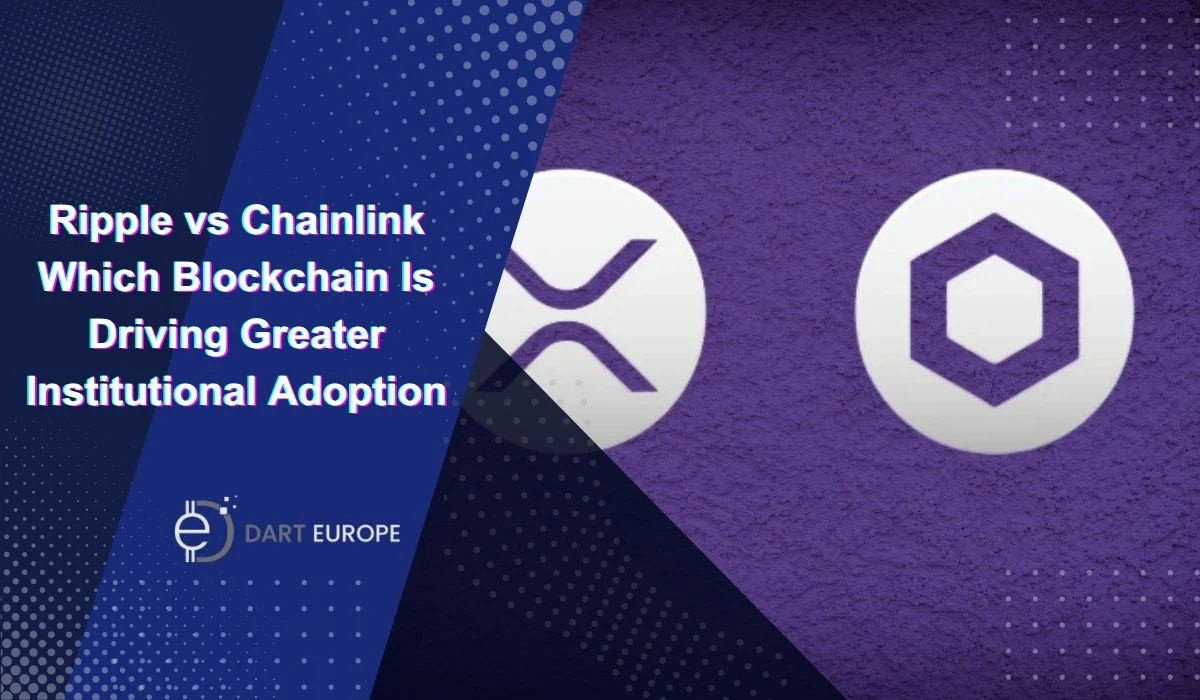On May 25, crypto research firm Messari published a report analyzing the XRP Ledger and Chainlink blockchains. The document highlights their technological niches, comparing their similarities, differences, and the trajectory of their adoption on an institutional level.
What is the XRP Ledger?
XRP Ledger or XRPL is a decentralized, open-source distributed ledger system designed and developed by Ripple Labs, focused on executing fiat and cryptocurrency transactions in a fast, cost-effective, and efficient manner on a cross-border settlement system. This makes it an attractive blockchain-based cross-border payment solution for banks and other financial institutions.
XRPL is powered by its native token XRP, which is currently the fourth-largest cryptocurrency, with a market capitalization of $137 billion.
What is Chainlink?
Chainlink is a decentralized oracle network and cross-chain products platform that provides real-world data feeds to various smart-contract-powered blockchains, such as Ethereum and Binance Smart Chain.
Its oracles rely on a decentralized network of nodes that collect and deliver real-world data to smart contracts. Chainlink offers a wide range of data sets, including price feeds, asset prices, and weather information, which can be used to trigger smart contract functions. The blockchain is designed from the ground up to handle high volumes of data and transactions, making it suitable for large-scale applications.
Chainlink’s native LINK token is the 13th-largest cryptocurrency, with a market cap of $10 billion.
Who are the Target Users of XRPL and Chainlink?

1. XRP Ledger
XRPL is a blockchain-based payment system whose target users are financial institutions, payment providers, treasury and liquidity providers, cryptocurrency exchanges, and remittance companies.
Financial institutions like banks and payment processors need to facilitate fast and low-cost cross-border payments, and XRPL fits their purpose. Companies like PayPal, Stripe, and Square, which offer payment services, can use XRPL to enable faster and more cost-effective transactions.
Firms that manage large amounts of cash, like treasury and liquidity providers, can use the decentralized ledger system to optimize their liquidity and reduce costs. Crypto exchanges can use XRP Ledger to process faster and cheaper transactions. Remittance companies such as Western Union and MoneyGram, which specialize in sending money across national borders, can utilize XRPL to reduce their costs and improve their services.
2. Chainlink
The target users of Chainlink are developers, financial institutions, tokenization firms, DeFi users, node operators, and stakers.
Chainlink provides blockchain developers with a platform to build and deploy smart contracts that can interact with off-chain data and services. This includes teams working on DeFi, NFT, and blockchain projects. Its decentralized oracle network is designed to meet the requirements of financial institutions, such as banks and capital markets, as it provides secure and reliable access to real-world data.
Chainlink is also suitable for tokenization, enabling the creation of tokenized versions of real-world assets and supporting their management across various smart contract blockchains.
The blockchain’s oracle network is also utilized by DeFi platforms to expand their services and scale their user base. Node operators can earn passive income by running Chainlink, providing the critical data infrastructure required for the network’s success. LINK holders can delegate their tokens to a trusted node operator to earn a 5% return from a combination of emissions from the Chainlink Treasury and fees paid by users of the data feeds.
Also Read: Alpenglow: Solana’s Largest Consensus Upgrade Explained
Institutional Interest for XRPL and Chainlink
XRP Ledger’s focus on payment solutions has made its prospects attractive among prominent financial institutions. Ripple, the company behind the blockchain, has been working with various global central banks and financial firms to support their services, including developing efficient cross-border payment rails and CBDC platforms.
Recently, Ripple joined forces with South Korea’s BDACS to provide institutional-grade custody services for the company’s XRP and RLUSD coins. In 2024, the company partnered with fintech firm Clear Junction to boost cross-border remittances in GBP and Euro.
Meanwhile, Chainlink’s CCIP protocol has been gaining traction among institutional investors. Big banks and payments firms like BNY Mellon, Citibank, and Euroclear have adopted its data infrastructure to source real-world financial data in real-time. Global cross-border banking framework SWIFT has also partnered with Chainlink to boost its plans to support cross-chain tokenized asset transactions.
In late 2024, Ripple integrated Chainlink’s data infrastructure to support its dollar-pegged RLUSD stablecoin. The partnership saw the blockchain-based payment giant tap into Chainlink’s decentralized oracle network to source real-time price feeds for RLUSD on the XRPL and Ethereum networks.

